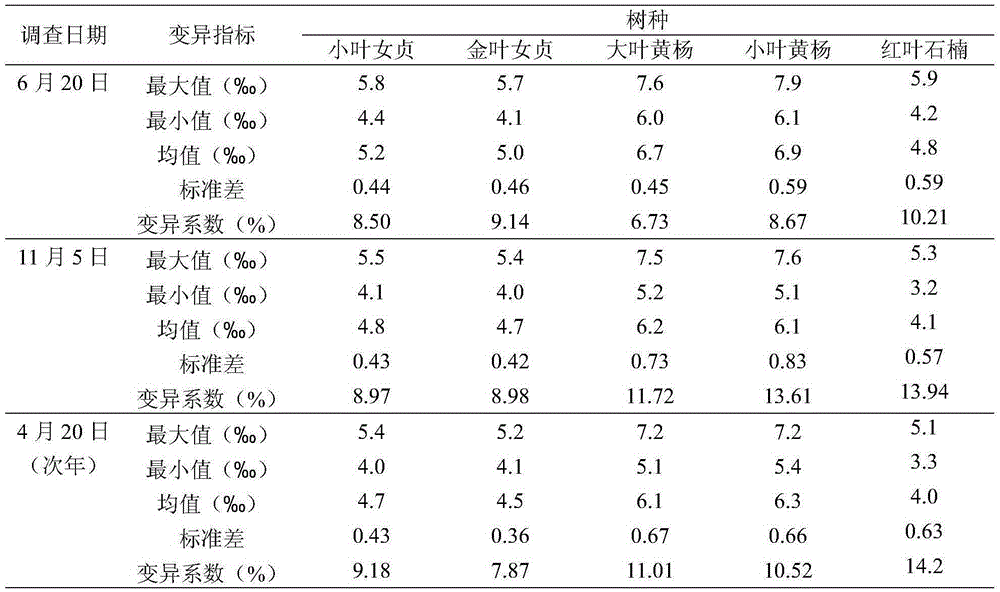Method for testing salt tolerance of greening nursery stock in saline land
A technology for saline-alkali land and seedlings, applied in the field of gardening, can solve the problems of inability to reasonably allocate tree species, poor application effect of seedlings, lack of objective evaluation, etc., and achieve the effects of simple and rapid determination of salt tolerance, good greening effect and high accuracy
- Summary
- Abstract
- Description
- Claims
- Application Information
AI Technical Summary
Problems solved by technology
Method used
Image
Examples
Embodiment Construction
[0025] The present invention is further illustrated by the embodiment of the method for measuring the salt tolerance of greening seedlings in saline-alkali land below.
[0026] 1. Plot selection and preparation
[0027] In the coastal saline-alkali land of Nantong City, Jiangsu Province, different plots with soil salinity in the range of 0‰ to 10‰ were pre-selected; then the distribution of soil salinity in these plots was investigated comprehensively, and the soil salinity was selected as follows: 0-2‰, 2-4‰, 4-6‰, 6-8‰, 8-10‰ five 3-meter-wide and 15-meter-long test areas, then leveled, weeded, and drainage ditches were dug around. Make sure that the test area is well drained and ready for use.
[0028] The survey and measurement method of soil salinity is as follows: in the pre-selected plots, the measurement points are selected at intervals of 50cm in a checkerboard pattern, and the conductivity values of the 5cm, 15cm, and 25cm soil layers at each point are measured wi...
PUM
 Login to View More
Login to View More Abstract
Description
Claims
Application Information
 Login to View More
Login to View More - R&D Engineer
- R&D Manager
- IP Professional
- Industry Leading Data Capabilities
- Powerful AI technology
- Patent DNA Extraction
Browse by: Latest US Patents, China's latest patents, Technical Efficacy Thesaurus, Application Domain, Technology Topic, Popular Technical Reports.
© 2024 PatSnap. All rights reserved.Legal|Privacy policy|Modern Slavery Act Transparency Statement|Sitemap|About US| Contact US: help@patsnap.com










